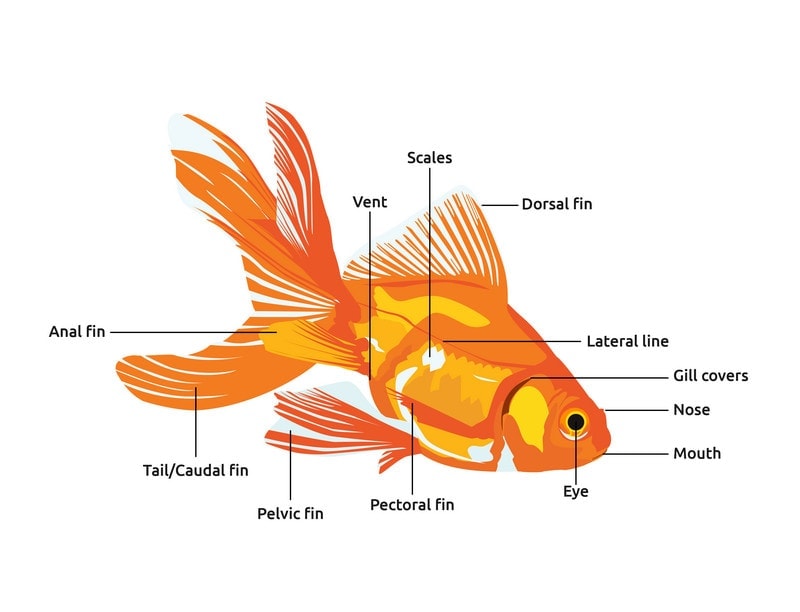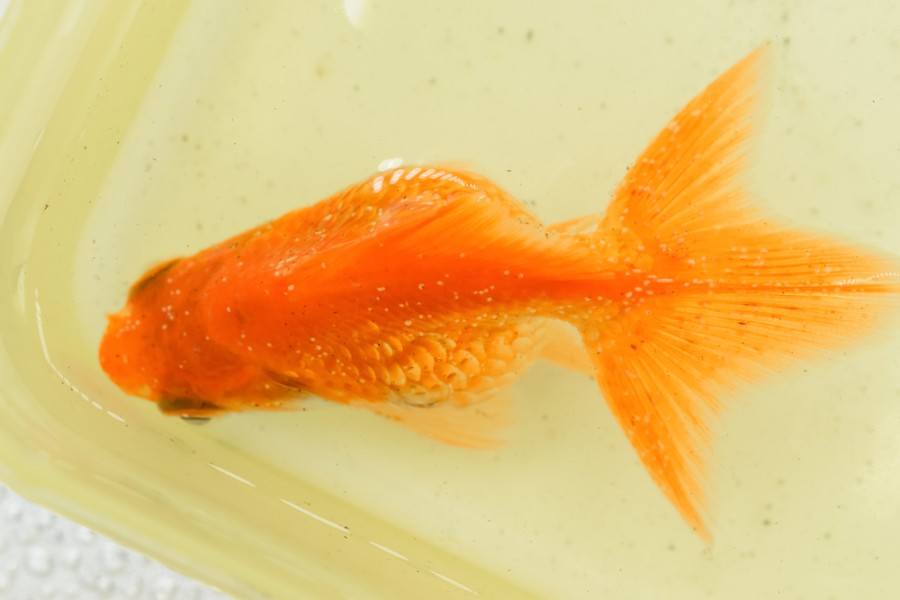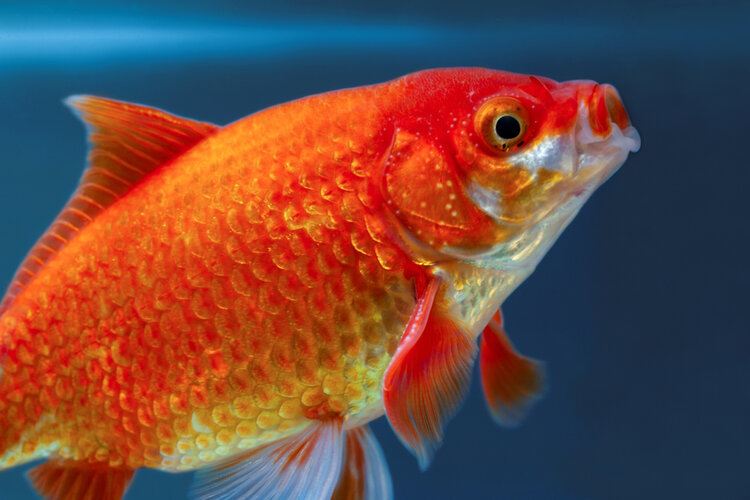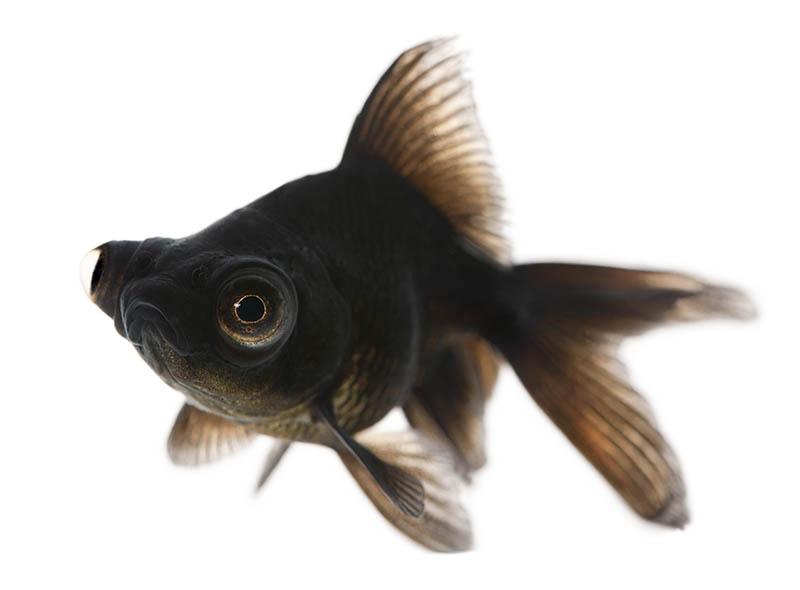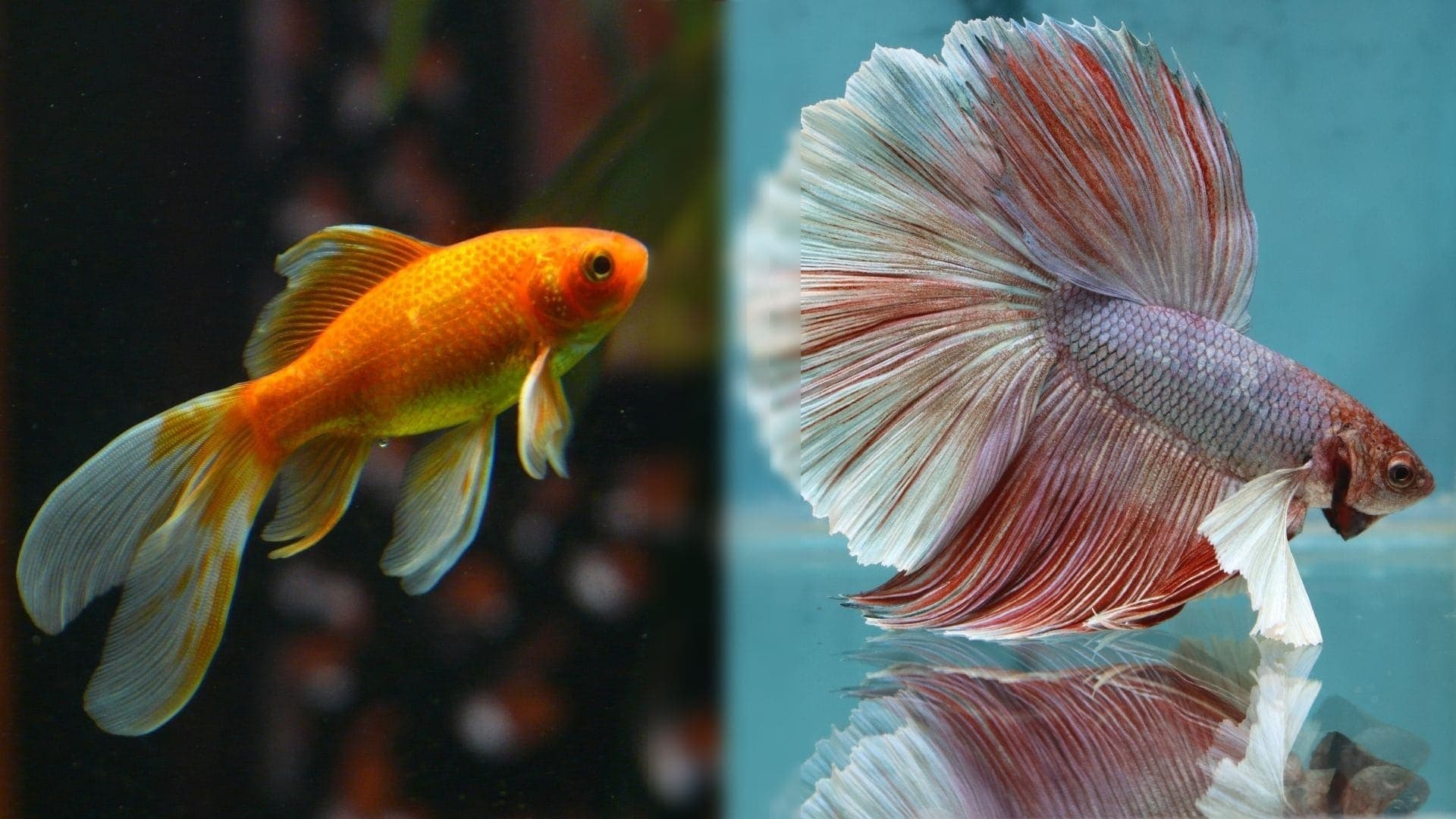Goldfish Anatomy: Body, Eyes, Gills & More (Diagram Included)
Updated on
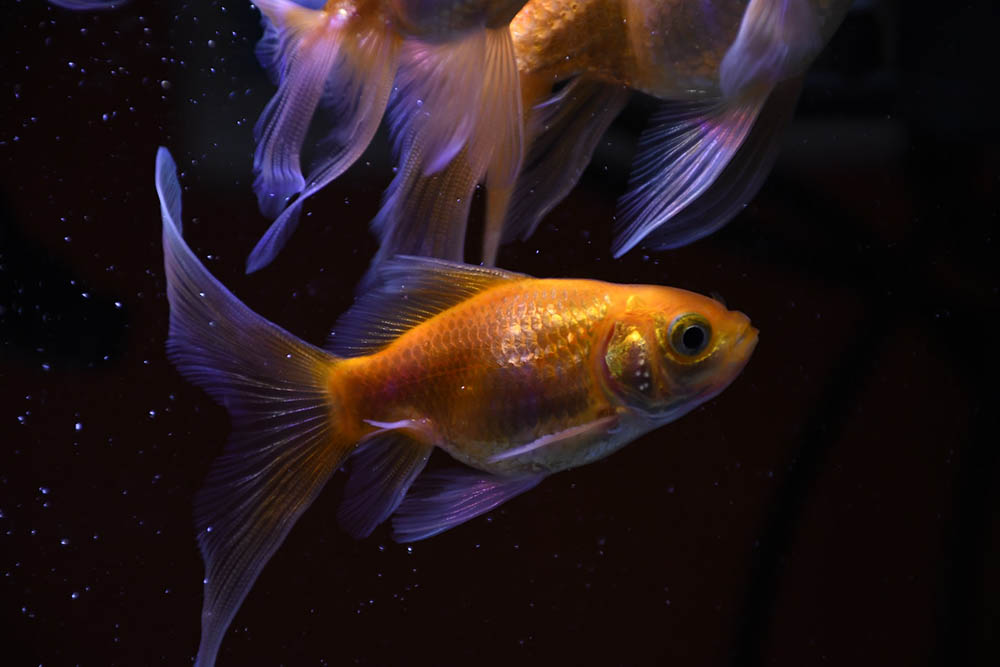
Goldfish are fish that are often underestimated. Many people aren’t aware of how interesting and social these fish can be. They’re intelligent fish that can recognize patterns and faces, as well as being able to be trained to perform tricks.
To help you better understand goldfish, we’ve put together this diagram of goldfish anatomy. Let’s break down the different parts of the goldfish anatomy and what purpose each serves.
The Parts of a Goldfish
1. Eyes
Eyes are an essential part of your goldfish’s ability to see the world around them. Their visual acuity is such that they can recognize patterns, faces, and colors. In fact, goldfish can see more colors than humans can. They can’t see in the dark, but they can see movement and shapes in low-light environments.
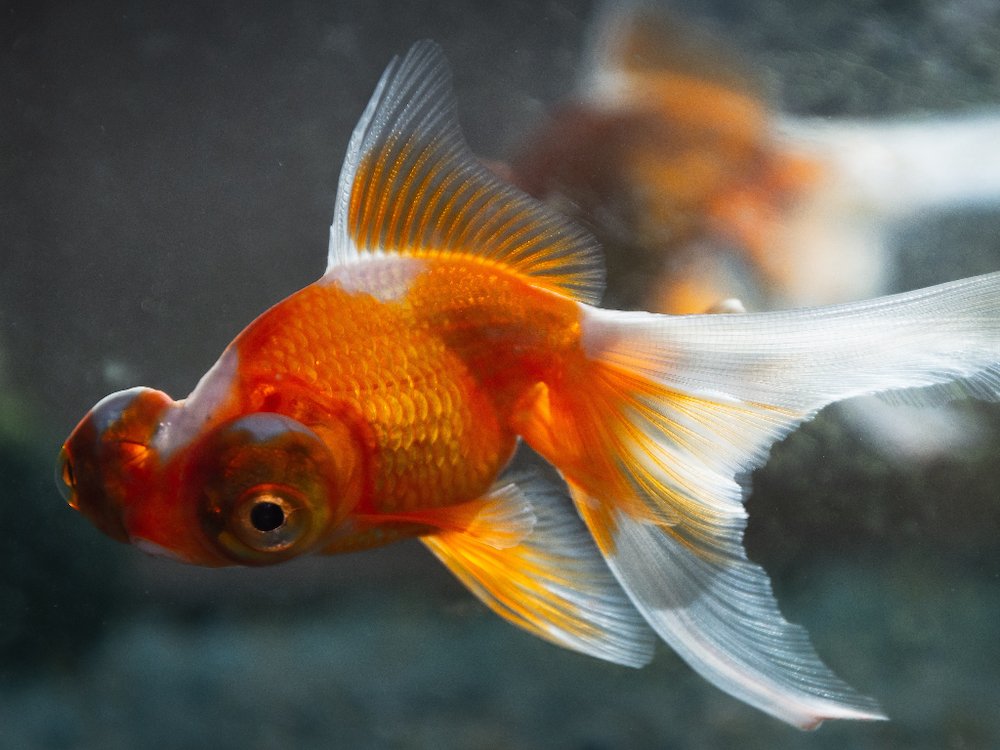
2. Mouth
Goldfish seem to never stop using their mouths. These fish love to eat, and they’re well known for eating anything that will fit in their mouth, including tank mates. It’s not uncommon for goldfish to need help getting large food, aquarium gravel, and other items unstuck from their mouth. It’s important to ensure your goldfish’s environment is safe and free of objects they may be able to fit into their mouth.
3. Nose
Goldfish do have noses, and they function in a similar way to the noses of humans, surprisingly. While goldfish don’t breathe through their nose, they do use them for smelling. They have a great sense of smell when it comes to the water they live in. They can use their nose to smell a variety of scents, including food odors, chemical additives, and other substances within the water.
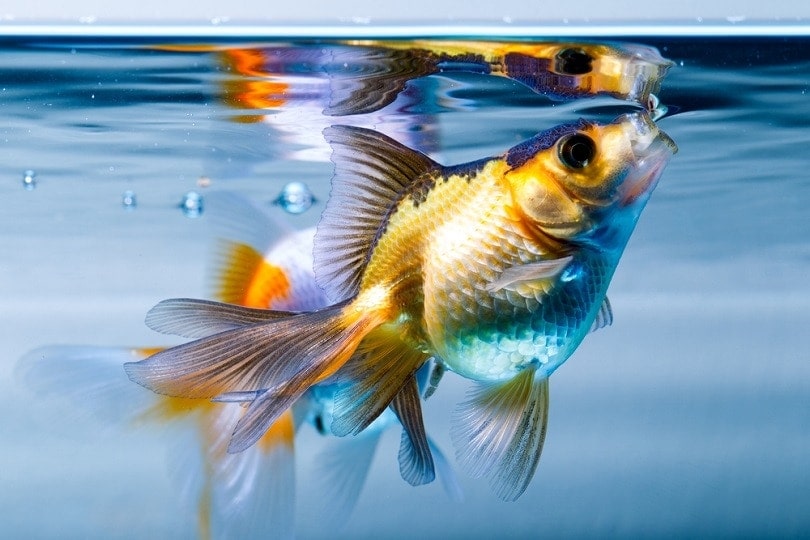
4. Gills and Gill Covers
Gill covers are bony flaps that cover the soft gills of the goldfish. While gills are the primary way that your goldfish receives oxygen from the water, the gill covers protect the gills from damage. They can also help to prevent things from getting into the gills. Gill covers are also called the operculum.
5. Lateral Line
The lateral line is an interesting and unique sensory organ present in fish. This organ allows fish to sense vibrations, movement, and shifts in pressure in the water. This helps the fish detect predators and danger, as well as helps them find food and detect changes that occur within the environment.
6. Scales
Goldfish are covered in scales, which provide protection for the fish’s body. The overlapping design of the scales allows the fish to have excellent mobility while remaining protected. Goldfish’s scales are covered in a mucus coating called a slime coat. The slime coat reduces drag as the goldfish moves through the water, and it reduces the ability of parasites, predators, and substances to attach to the fish’s body.
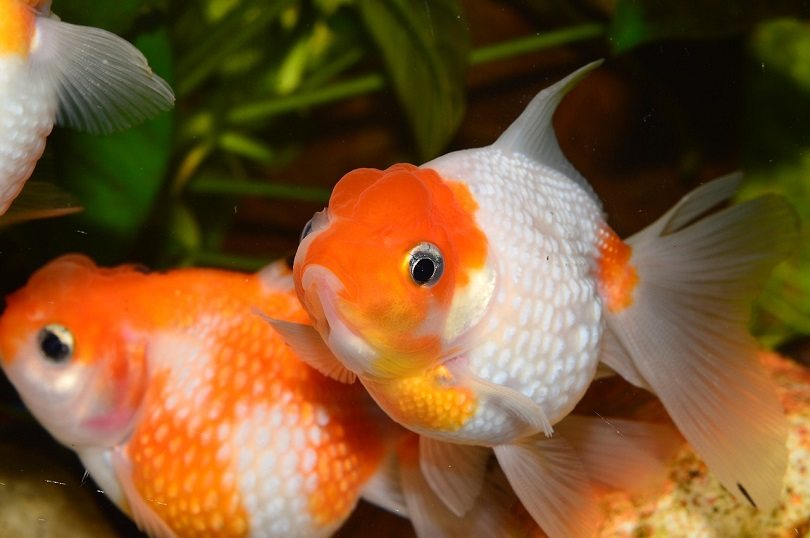
7. Vent
A vent is similar to an anus in that it is used to release waste from the fish’s body. What makes a vent differ from an anus is that it is also used for reproductive purposes. During spawning, male fish will release milt from the vent, while females will release eggs.
8. Dorsal Fin
The dorsal fin is located in the middle of the back of most goldfish, although some fancy goldfish varieties lack a dorsal fin. This fin helps the fish with mobility and balance during swimming.
9. Pectoral Fin
Goldfish have pectoral fins on both sides of the body behind the gills. These fins can be used by goldfish to rapidly change direction to the left or the right. They can also be used to increase swimming speed, as well as rapidly slow the speed at which the fish is swimming.
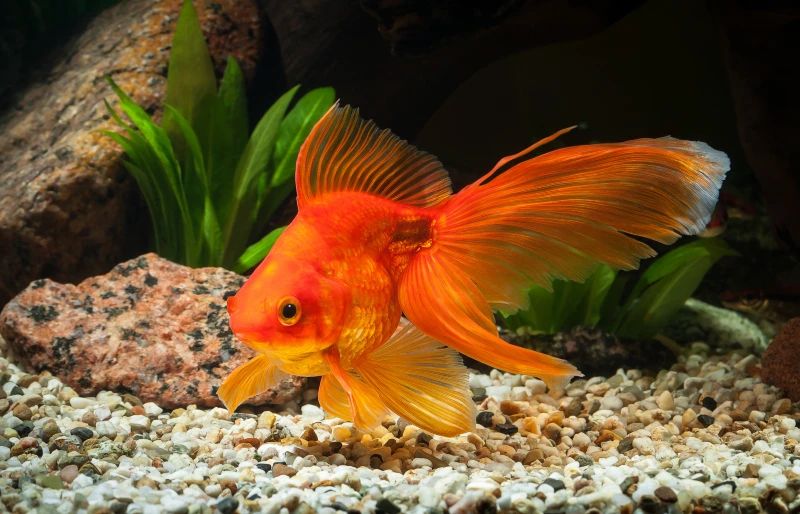
10. Pelvic Fin
The pelvic fins are located underneath the goldfish’s body. While there is one on either side of the body, they are close to each other. These fins are used to help the goldfish move up or down in the water, as well as supporting balance and mobility.
11. Anal Fin
The anal fins are located just behind the vent on the bottom of the goldfish’s body near the back of the body. There are two anal fins that are located nearby each other. These fins serve to support balance and mobility while swimming.
12. Tail/Caudal Fin
The tail fin, also known as the caudal fin, is the fins attached to the tail of the fish. Different varieties of fancy goldfish may have more than one tail fin. The primary purpose of the tail fin is to propel the fish as they move through the water. It functions in a similar way to a person swimming with flippers on their feet.
Frequently Asked Questions
How many bones do goldfish have?
Believe it or not, goldfish have approximately 1,500 bones in their body. Most of these bones are extremely small in size, and goldfish have very few large bones compared to their overall body size.
Are goldfish warm-blooded or cold-blooded?
Goldfish are cold-blooded animals. Like other cold-blooded animals, goldfish get their warmth from their environment. They require temperate water temperatures, and in cold water temperatures, their metabolism and activity level becomes extremely low and they enter a semi-hibernation state called “torpor.”
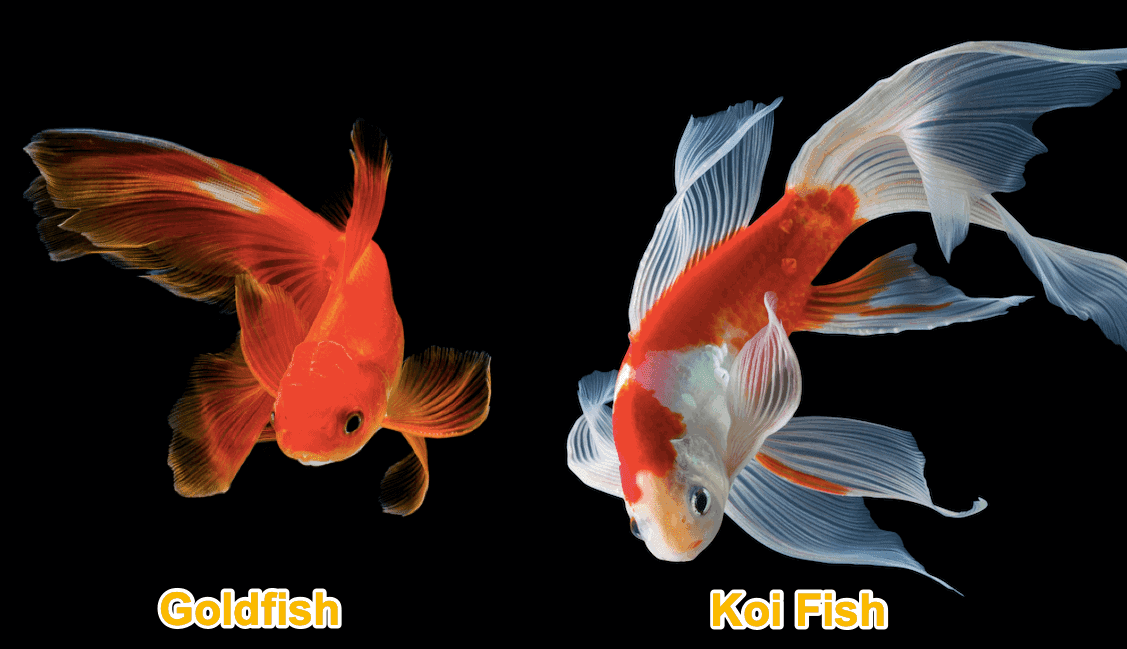
How does goldfish anatomy differ from koi anatomy?
There are multiple differences between goldfish and koi, the primary difference being that these fish belong to two different species. The most distinct anatomical difference between the two, though, is that koi have barbels present near the mouth. Barbels are the whisker-like appendages that are used to locate food and sense the surrounding environment.
Do goldfish have teeth?
Goldfish do not have true teeth. However, they have pharyngeal teeth, which are a set of grinding plates located near the back of the fish’s throat. These allow them to crush food to aid in digestion.
In Conclusion
Goldfish are interesting fish that are naturally quite streamlined. Selective breeding has led to a huge variety of goldfish breeds, though, so some goldfish may have unique or difficult to identify anatomy that goldfish wouldn’t naturally have. Goldfish and koi are often confused for each other, especially while still small, but the easiest way to tell them apart is to look for the distinctive barbels that koi have and goldfish lack.
Featured Image Credit: Abhinav Agrawal, Unsplash

